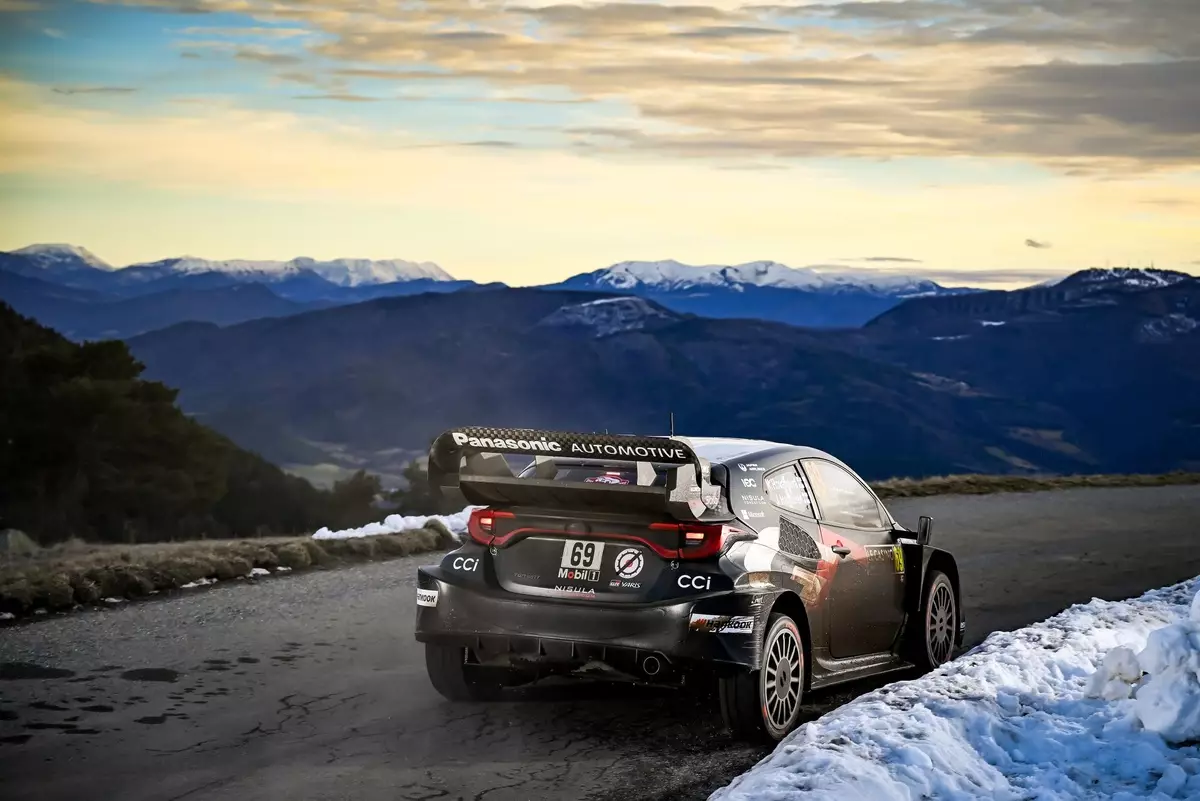The world of motorsport is one characterized by constant evolution, and one of the most significant changes in recent years has been the introduction of new tire technology in the World Rally Championship (WRC). For Kalle Rovanpera, the reigning two-time world champion, this shift has presented a notable challenge. As the WRC kicked off its season in Monte Carlo, Rovanpera faced the task of adjusting his driving style to effectively handle the performance attributes of the new Hankook control tires. His difficulties with the slick tires underlined another layer to the intricate nature of rally racing, where tire choice can be a decisive factor.
Rovanpera’s admission of needing to modify his driving approach comes as no surprise. Veteran drivers often emphasize how vital tire feel is to performance. The slick tires, despite being designed to maximize grip on dry surfaces, seemed to clash with Rovanpera’s natural driving instincts, leaving him scrambling for traction as he sought an optimal balance. The nuance of this situation highlights the technical decisions teams must make regarding setup, not just for their vehicles but also in terms of how drivers adapt to evolving conditions on the road.
During the event, Rovanpera’s on-track performance was mixed as he grappled with finding a suitable pace, especially when transitioning from snow and studded tires to slicks. Managing to secure victory on stage four amid unpredictable conditions, he ended the day in fourth overall, trailing teammate Sebastien Ogier by 38.5 seconds. This outcome encapsulated the essence of rally racing: it’s not solely about speed, but about the ability to adapt to an environment that can change in an instant.
Rovanpera’s experience in prior Monte Carlo events, particularly his fourth-place finish in 2022, provides an interesting backdrop. During that rally, he faced a different type of challenge concerning vehicle setup, suggesting that his inherent adaptability is a strength. However, the current scenario highlighted a different struggle—one rooted in tire performance. Rovanpera expressed the realization that while his approach might have delivered success in the past, it warranted recalibration to compete effectively under the new tire regulations.
While Rovanpera navigated the challenges of the new tire regime, his Toyota team demonstrated collective strength, ending the day with three vehicles placed in the top four positions. With Sebastien Ogier assuming the lead after teammate Elfyn Evans encountered difficulties, the dynamics within the team showcased Toyota’s resilience. Ogier’s perspective on his local knowledge reflects the essence of rally driving; experience can indeed provide a competitive edge, but it is not a guarantee of success.
Ogier’s emotional triumph in winning a stage close to his roots reinforces the human element of racing. The psychological pressure of competing in a familiar setting, coupled with the expectations that come from having a storied career, is immense. This aspect underscores that even experienced drivers like Ogier still confront significant personal and competitive challenges, illustrating that excellence in motorsport is not solely about technical skill but also mental fortitude.
For Kalle Rovanpera, the road ahead is paved with opportunities for growth and adaptation. The necessity to refine his technique when dealing with the new tires will be crucial as the season progresses. Acknowledging that peak performance is often about finding the “sweet spot” not only within the car’s setup but also in his own driving philosophy elucidates the ongoing learning curve that is characteristic of elite sports.
As he strives to achieve a faster pace, Rovanpera’s realization that achieving a top-four finish is merely a stepping stone rather than the final goal speaks volumes about his ambition and competitive spirit. With time, he and his team are likely to leverage this experience to unlock performance potential. The WRC has always served as a platform for drivers to showcase their adaptability, and Rovanpera’s proactive approach signals that he is more than ready to embrace the challenges that lie ahead. The story of his adjustments and improvements will undoubtedly be one to watch as the season unfolds.


Leave a Reply